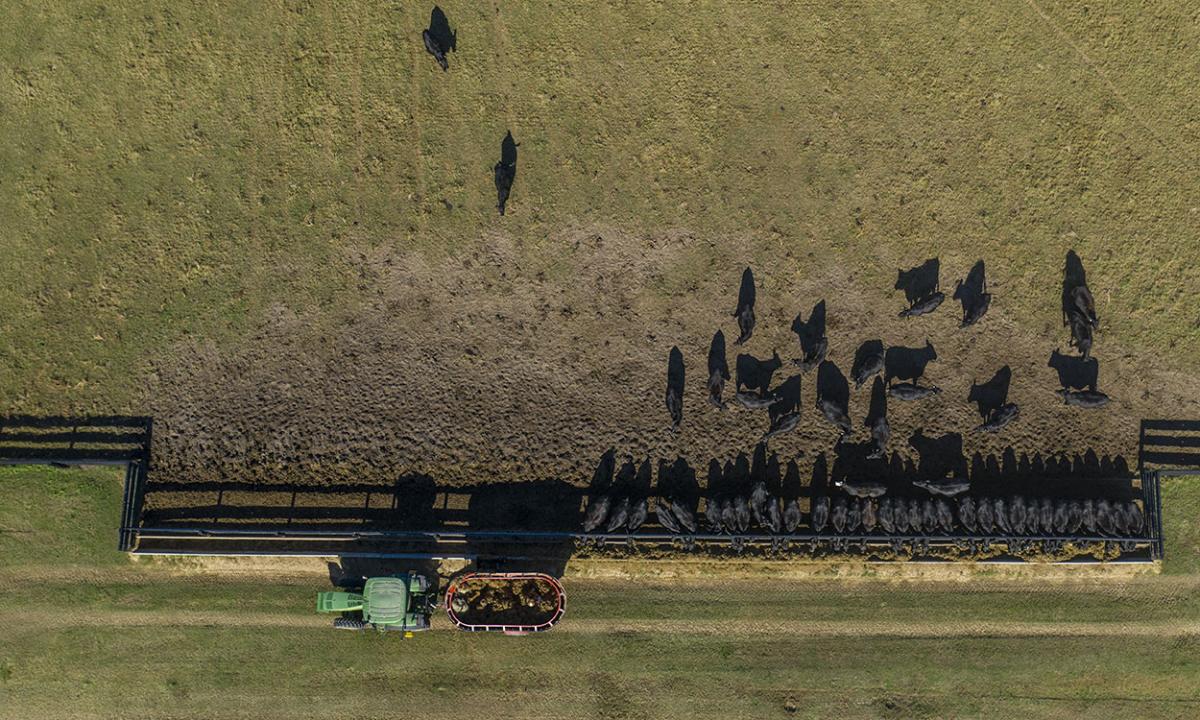Greenhouse Gas Overview
Written collaboratively by Jameson Brennan, Dalen Zuidema, and Hector Menendez.
Greenhouse gas emissions have been at the forefront of many news stories and policy discussions lately, with livestock production often being the focus of these discussions. Greenhouse gas emissions refer to the release of certain gases into the earth’s atmosphere that can trap heat. The graph in Figure 1 shows the relative contribution of greenhouse gases by each sector of the economy, with agriculture as a whole accounting for 11.2% of the total emissions. The greenhouse gases of primary concern to the agricultural industry are carbon dioxide (CO2), nitrous oxide (N2O), and methane (CH4).
 Figure 1. Greenhouse gas emissions for different sectors of the U.S. economy.
Figure 1. Greenhouse gas emissions for different sectors of the U.S. economy.
Carbon dioxide is the most prevalent in the atmosphere and is primarily the byproduct of burning fuel and land-use changes. Examples in the beef industry could include burning diesel to truck hay or the resulting carbon emissions due to a wildfire. Nitrous oxide is a potent greenhouse gas that is often emitted through the use of synthetic nitrogen-based fertilizers or from manure and urine decomposition. Methane is another potent greenhouse gas and is a byproduct of enteric fermentation that occurs as a natural part of digestion in ruminant animals (sheep, cattle, bison, giraffes, and others). Ruminants account for 4.2% of all greenhouse gas emissions in the United States, with beef cattle accounting for approximately 2% of direct emissions. Approximately 311 million hectares of rangeland, 53 million hectares of pastureland, and 16 million hectares of hay land exist in the United States, which serve as the main source of forage for approximately 31.7 million beef cows, 3.8 million breeding sheep, and 2.2 million breeding goats in the United States. An enhanced focus has been placed on implementing land management practices within these acres to reduce U.S. greenhouse gas emissions. This is partly due to the sheer size of the land area, and that many of these acres exist as perennial grass species with the ability to store carbon in their roots.
Climate-Smart Agriculture
Whether you call it sustainable, regenerative, or climate-smart agriculture, there has been significant interest recently in the role that agriculture can play in reducing greenhouse gas emissions and sequestering carbon. This past year, South Dakota State University received an 80-million-dollar grant from the USDA to develop commodity markets for beef and bison produced using climate-smart practices. Producers participating in carbon markets can potentially create an additional revenue stream for their operation either through the direct selling of carbon sequestered in their soil from practice adoption or by returning a premium on commodities sold from their operation.
